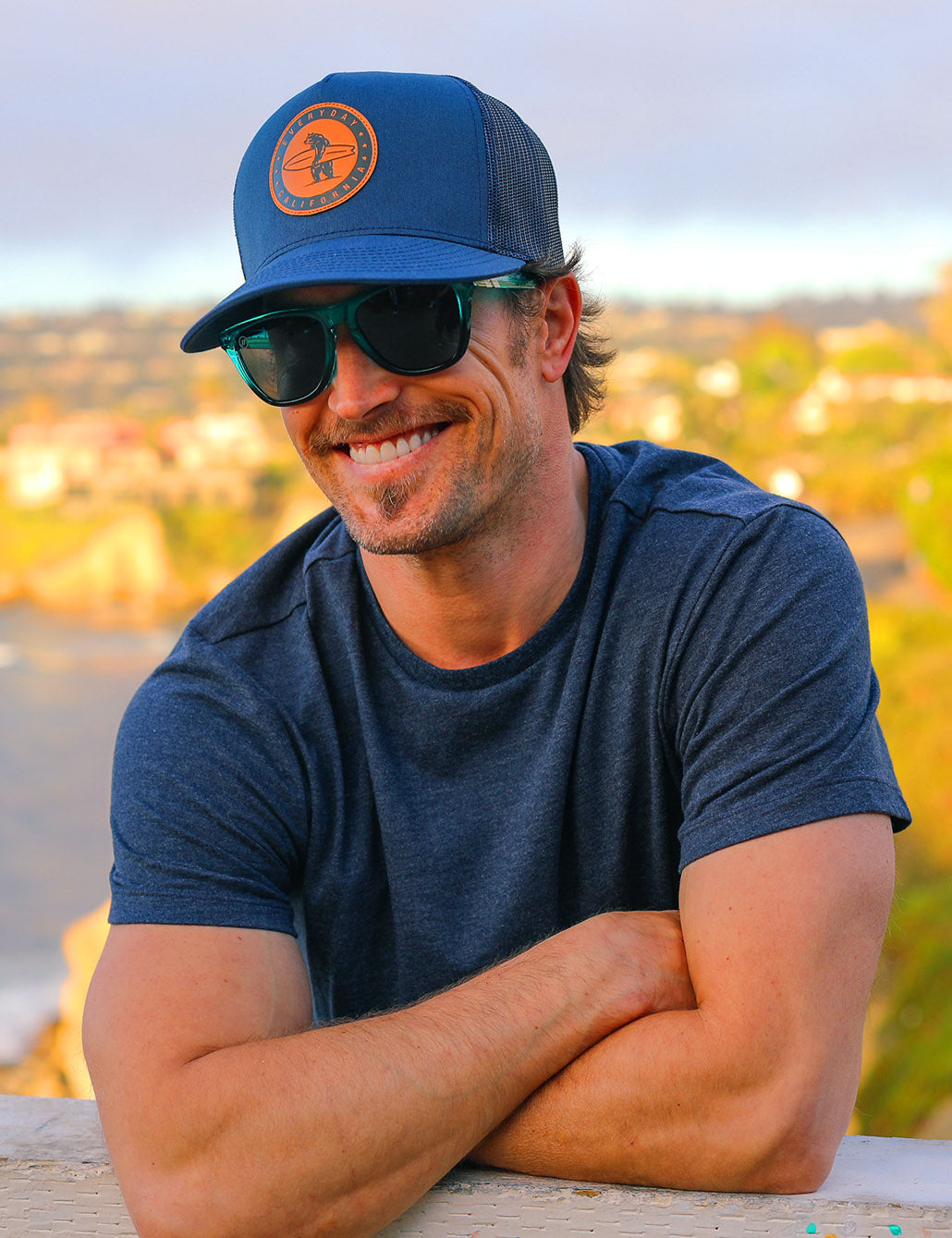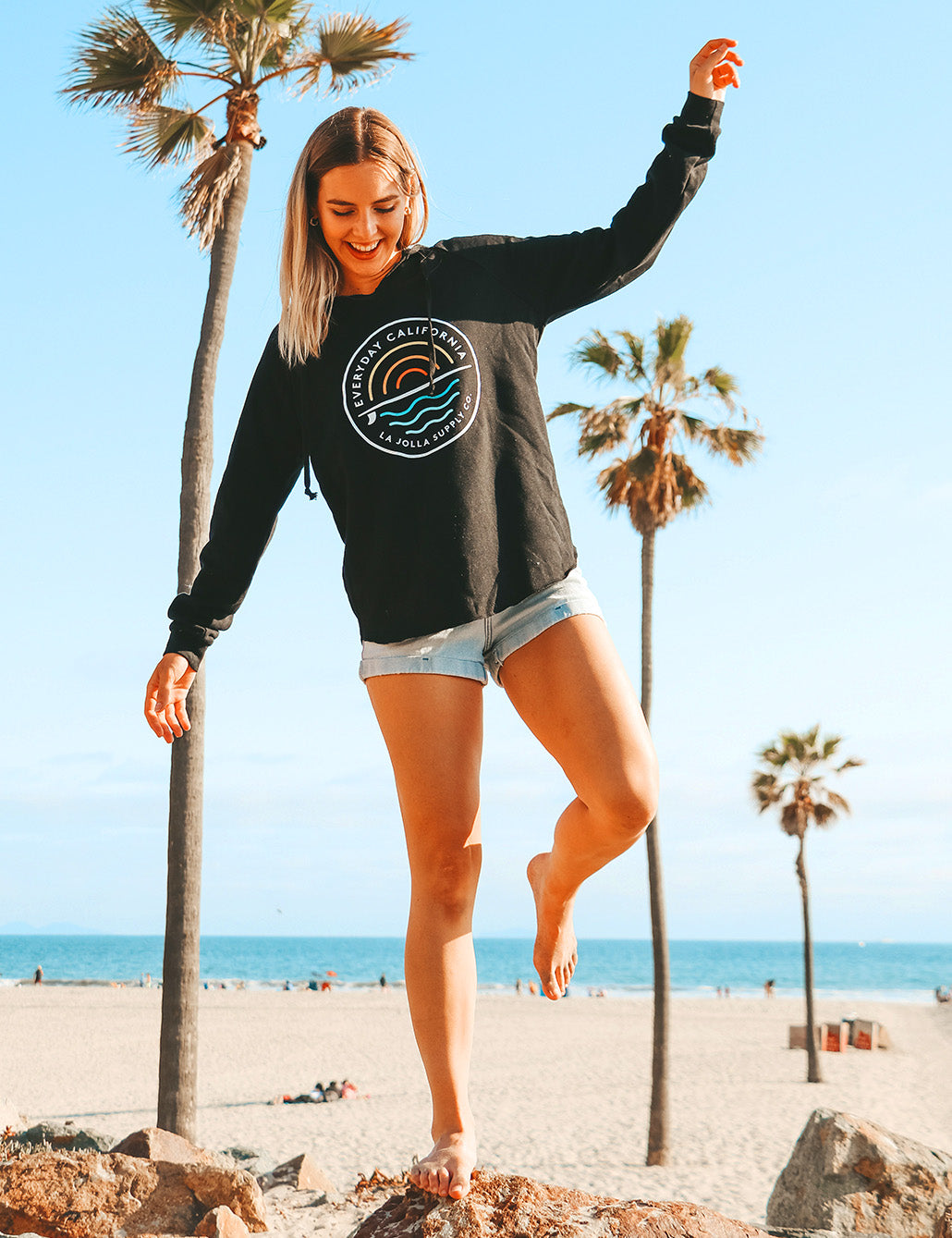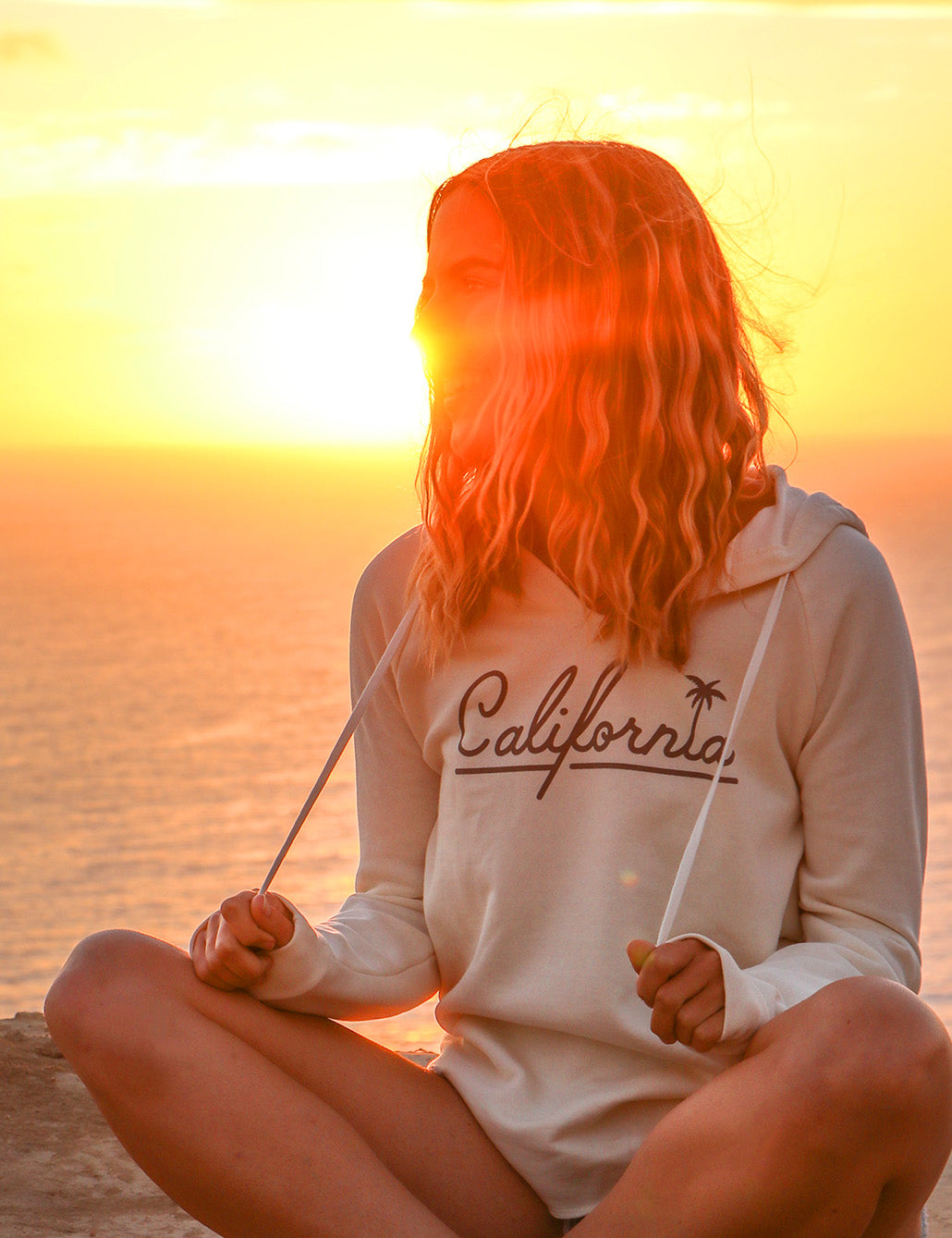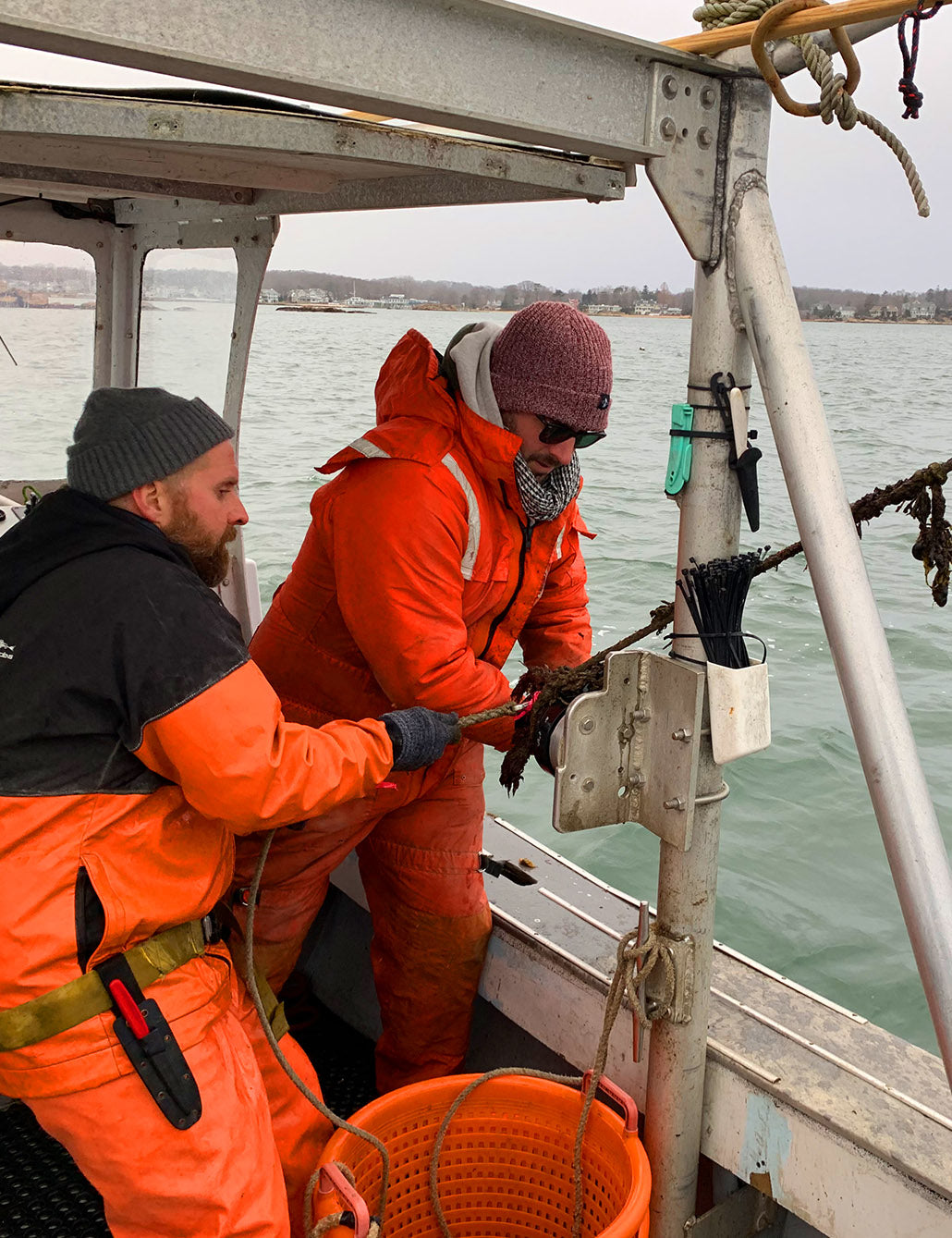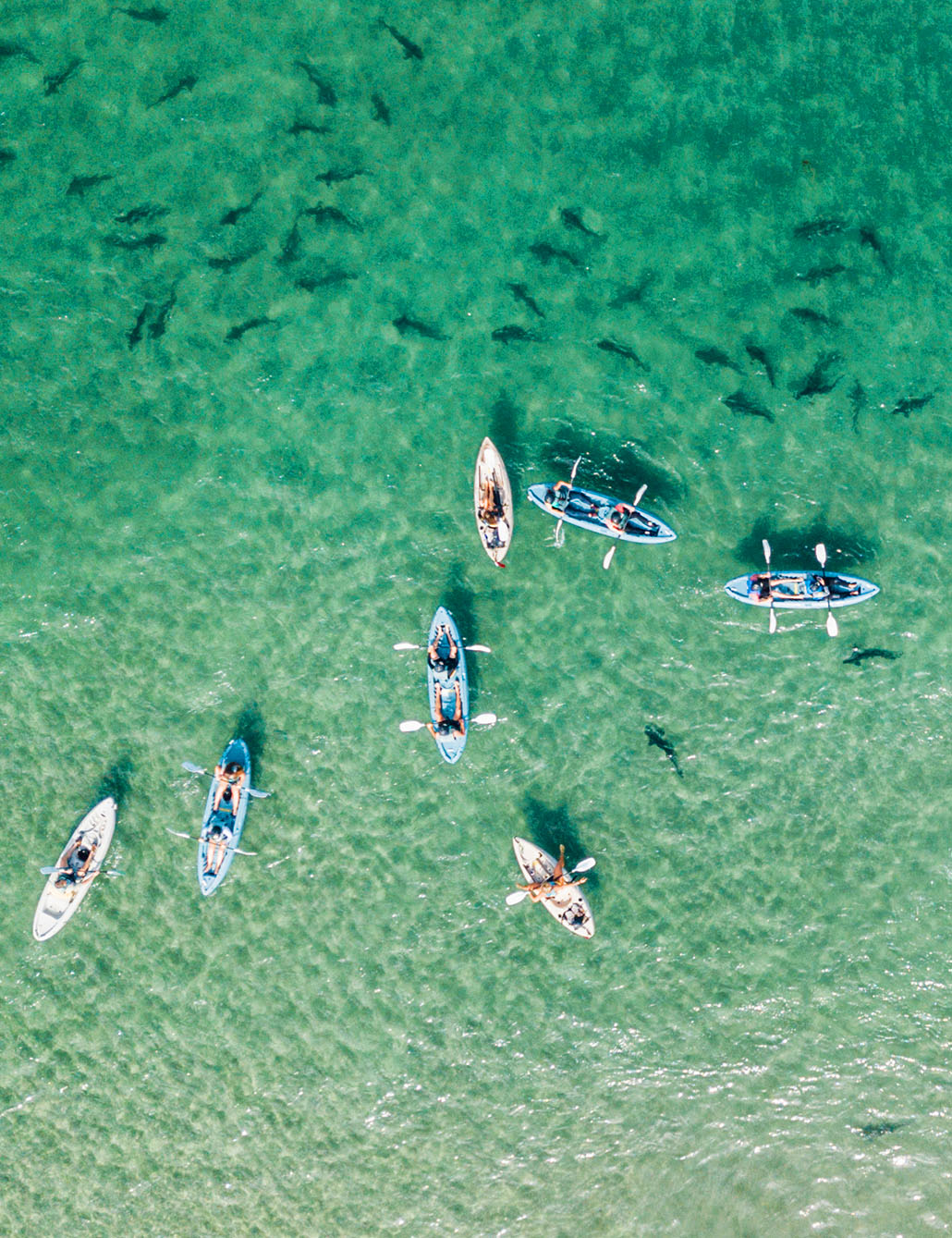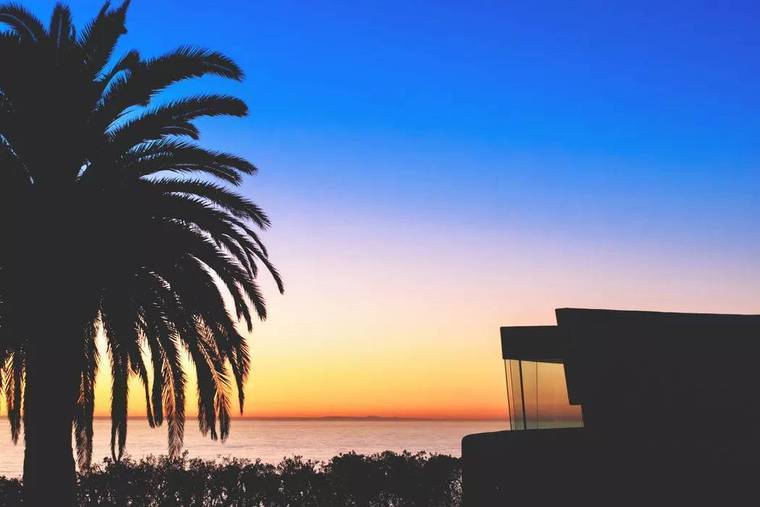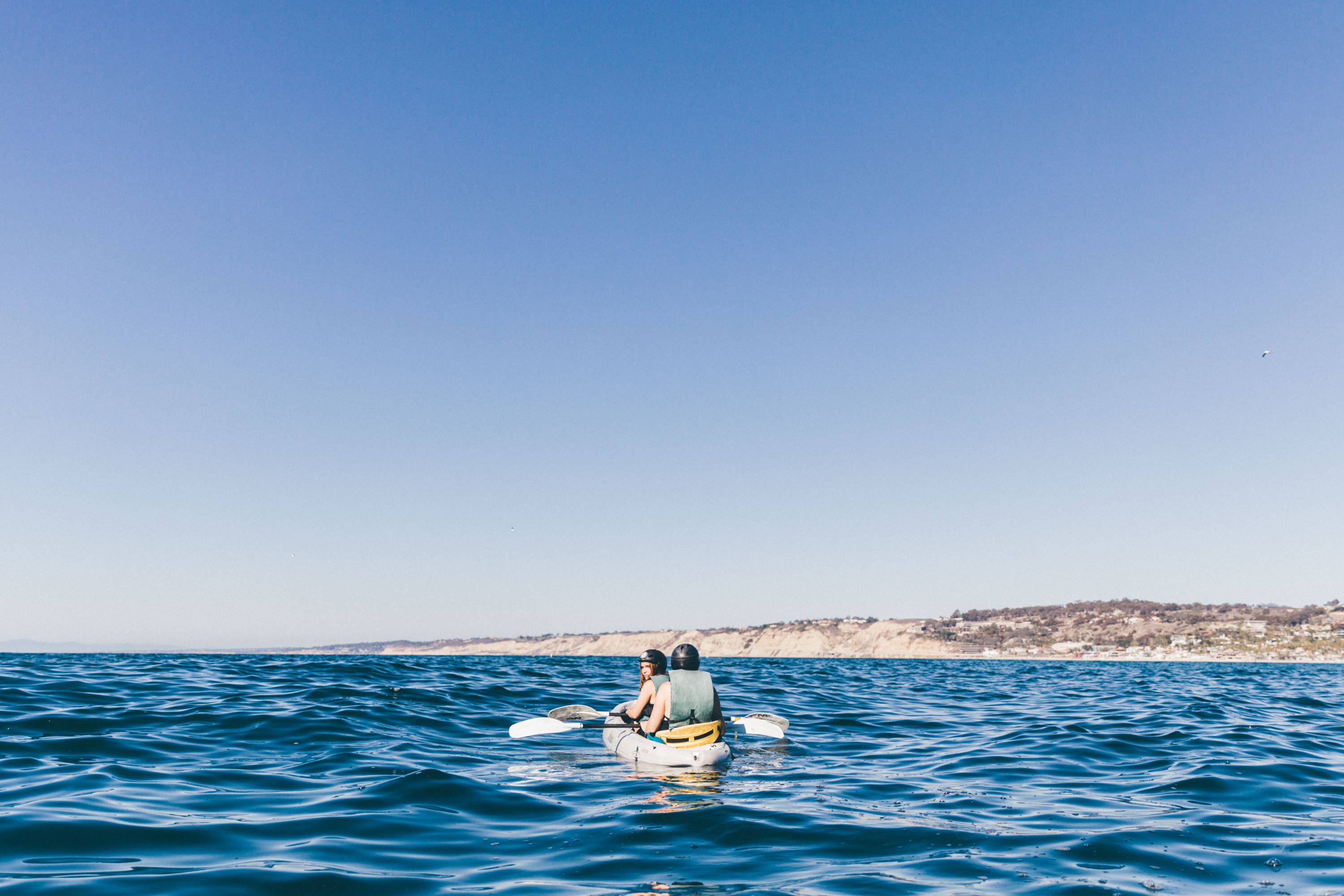By Andrew Iida I Head Writer and failed Chinese acrobat
La Jolla Shores
Best surf spot for beginners

If you live in San Diego and want to learn to surf, this is your spot. You don’t have to take our word for it—it’s ranked by Surfline as one of the top 10 beaches in the whole country (including Hawaii) to learn how to surf. It has everything you’re looking for. Consistently good surf that stays around 2-4 feet in the summer, a sandy bottom without any reefs to worry about running into, and some awesome people giving lessons to get you ready to start surfing on your own.
The Shores is long, flat, and sandy, and the beach break that’s protected from a lot of the strong southwest winds and currents means that there’s rarely a day when there’s not good waves. And unlike beaches where the breaks can result in fast-moving, ever-changing waves, the beach break at La Jolla Shores is always very predictable with smaller waves that are slow enough to be forgiving while you master your pop up, while being strong enough to catch while you’re still working in your paddling technique.
This is a beach that’s known as a place with lots of beginners, so you’re not going to have locals trying to keep you out, and they’ll be pretty forgiving if you accidentally break some of the rules of surfing etiquette. Once you get a bit more confident in your abilities, you can move up north closer to the Scripps Pier, where the waves get bigger.
But don’t think that this is a place only for beginners. La Jolla Shores is also a surf spot for serious surfers, and is home to surfing competitions including the annual Amp Surf Championship and the Windansea Menehune Contest. And when the winter storm swells hit the beach just right, you’ll see perfect 10+ foot sets that make the Shores one of San Diego’s premier advanced surfing spots.
Pro tip: Especially in the summers, come here early. The Shores gets PACKED on sunny afternoons in July and August, and the parking lot by the beach is basically Mad Max.
The Wedge
Best surf spot for high intensity surfing

Surfers call powerful waves punchy. The waves at the wedge are Mike Tyson in his prime. They’re not just massive; they’re insanely thick and strong. Even experienced surfers have to be a little bit insane to surf on a wave like this, and they know they’ll be taking a strong risk.
The intense waves are the result of a 2,000 foot long jetty built in the 30’s. Waves that hit this long line of rocks at the right angle are reflected back and combine with the next wave in the set, creating freak waves that can be up to 30 feet high. This happens at irregular intervals and creates unpredictable waves that break in shallow water very close to the shore. It's not terribly uncommon for people to end their surfing session here with fewer teeth than they started with.
But if you are okay with the risks, it’s the perfect spot for adrenaline junkies. You might want to use a foamie like Jamie O’Brien did when he surfed here because when—not if—the wedge throws you down like a ragdoll, you’ll at least have a soft surface to smash your face against.
The Wedge is a popular spot for bodysurfing, so when you surf here, you’ll have to keep a keen eye out for swimmers. The black ball flag is raised every year from May 1st to October 31st to reserve the area for bodysurfers, but surfers are continually lobbying the city to reduce this time and open the break to boards for more of the year.
Mavericks
Best surf spot for big wave surfing

Like The Wedge, Mavericks is a surf spot for thrill seekers, but the waves here are on a whole different level. Located just north of Half Moon Bay, Mavericks has the biggest waves in the mainland United States, and is one of the premier big wave surfing spots in the entire world. Whereas you need experience to surf The Wedge, you need expertise to surf Mavericks.
Mavericks is still a relatively new surf spot, compared to some of the popular beaches in Hawaii that have been surfed for centuries. A few people surfed it in the 60’s, and then in the 70’s, but it didn’t really take off until the 90’s. In 1999, an annual invitational surfing competition known as Mavericks International and later rebranded as Titans of Maverick helped cement the location’s legacy as a world-class destination for big wave surfing.
The waves here can get up to 50 feet and often break onto the rocky reef, so you’ll need to be ready to end a ride before you get too close. If you can handle the waves and avoid the rocks, you’ll also need to keep an eye out for the great white sharks. The main takeaway here is that it’s not the place for the faint of heart.
Even if your skills are up for it, don’t surf here alone. Mavericks has already claimed the lives of several surfers, and not because they lacked skill or experience. The Mavericks Water Patrol is regularly in the area with jet skis and highly-trained rescue personnel, but when the surf gets good (as in dangerously big), even they might not be much help.
But if you have the skill, the right preparation, and the right surf, these are some of the most legendary waves you’ll be able to surf in your lifetime.
Lunada Bay
Best for Palos Verdes Locals/Worst for anyone else

The surf is excellent. The people… not so much.
Lunada Bay is a small bay in the city of Palos Verdes Estates, Los Angeles County. It has some of the best waves in Southern California, and the location and geography can mean that when other nearby breaks are closed out, the Bay can still have perfect, glassy waves that have been reported to get up to 20 feet. It’s one of the surf spots that proves California can rival Hawaii for the country’s best surfing.
The problem is that it has one of the worst reputations for localism in the entire country. The Lunada Bay Boys, a local surfing gang, are fiercely protective of their beach, and have worked hard to give it a reputation as a locals-only spot. Even world-famous surfers have been the target of harassment. Despite multiple lawsuits and settlements against the gang and the city, it’s still primarily a spot for locals. If you grew up by the beach in Palos Verdes, this is where you’ll want to surf. If you didn’t, you’ll probably want to look elsewhere.
If you want to take your chances and try to surf here, just be aware that you may get into a fight, have rocks thrown at you, or return to the parking lot to find your tires slashed and your car coated in surf wax when the delicate Bay Boys get their feelings hurt. And while you’re there, be sure to follow the rules of surf etiquette—dropping in on a local at Lunada Bay is a guaranteed bad time.
We think surfing should be for everybody. As long as you’re respectful to other surfers and to the ocean, we have no problem with sharing waves. Hopefully someday soon, localism like this will be a thing of the past and the Lunada Bay Boys will move past their elementary school maturity levels and become Lunada Bay Men. Until then, there are plenty of other beaches.
San Onofre
Best surf spot for longboards

You know those cool surfing videos where pros on shortboards launch themselves off 6 foot waves, spin through the air, and carve back down the face? You usually won’t see too much of that at Sano. This surfing spot is known for the opposite—smaller, mellower waves seem to extend forever down the beach.
It’s mellow enough that this is a spot that’s great for kids and new surfers, and on a windless day with the right swells, the waves attract longboarders of all ages and skill levels, even pros and surfing legends. On the right day, the waves break so cleanly and for so long that it feels like you’ll die of old age before you have to end your ride.
One of the most prominent features in San Onofre is the nuclear power plant right next to the beach. It was active from 1968 to 2013, and is still in the process of being decommissioned, which means there is still nuclear waste at that site. It’s completely contained and safe, so there are absolutely no risks to surfing there. But if the old nuclear plant scares you away, we won’t try too hard to change your mind—it just means more waves for us at one of California’s best surfing spots!
There are a few different areas in San Onofre State Beach, including Trestles, The Point, and Dog Patch, but for longboards, one of the most popular spots is Old Man’s.
When you’re ready to check it out, keep in mind that you have to pay $15/day to park in the state park’s lot. You might be able to find some free street parking, but it’s a popular spot, so go early if you don’t want to pay. Also be prepared to be patient in the lineup. The water is crowded, but the waves are worth the wait.

